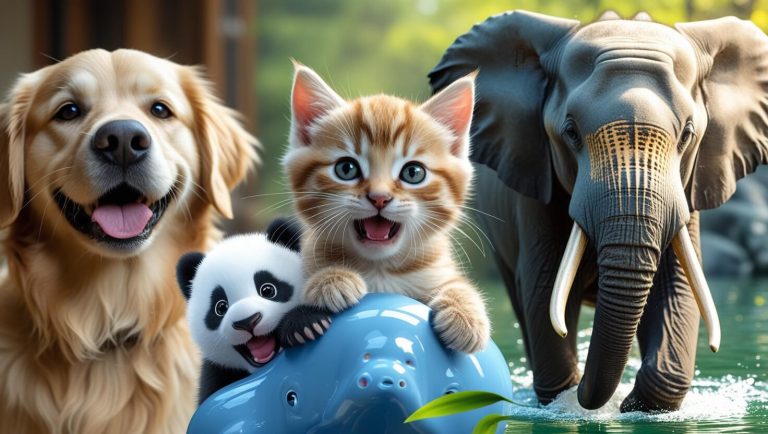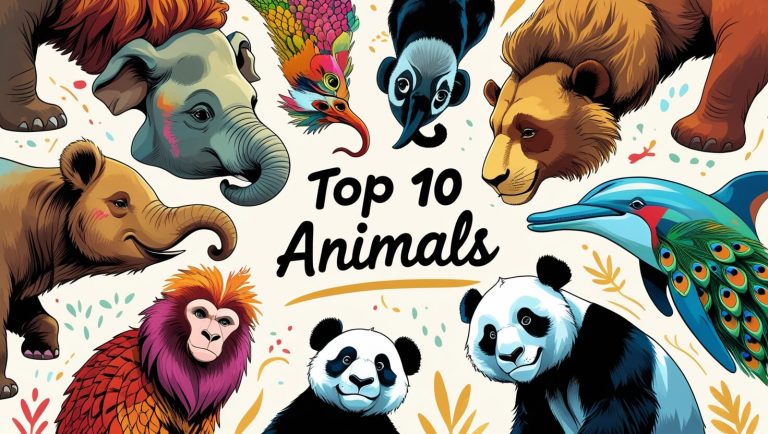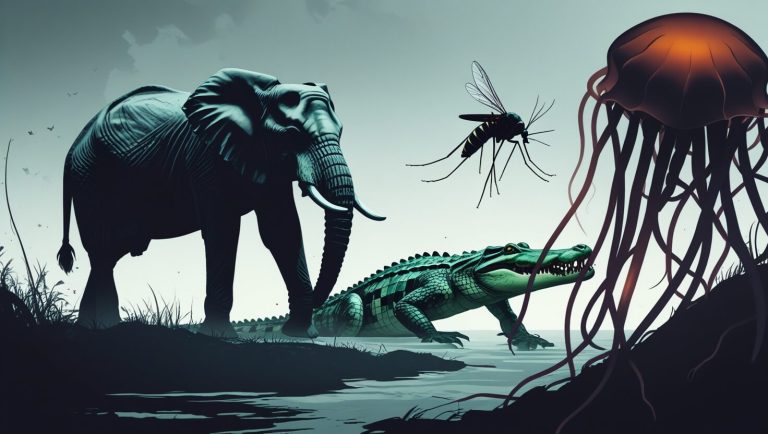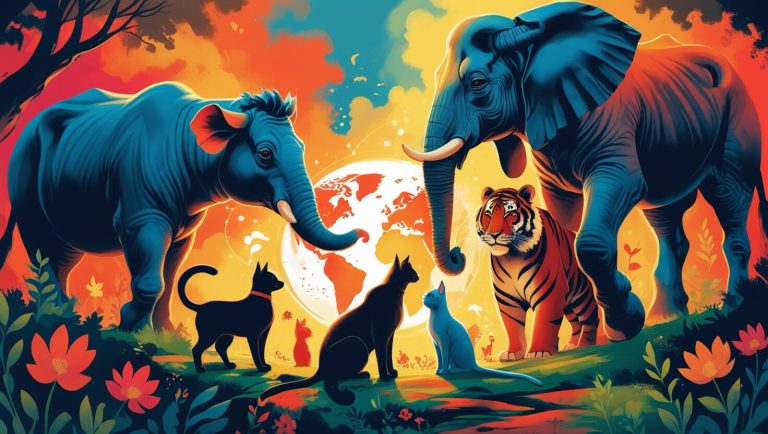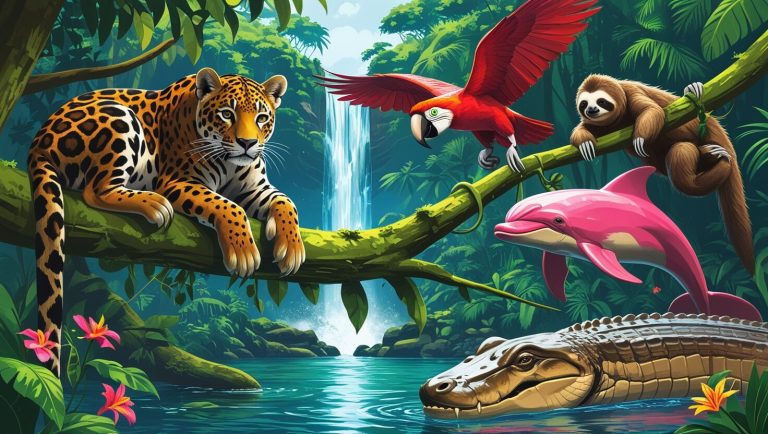Top 10 Animals That Kill Humans: Most Dangerous Creatures
When we think of the world’s most dangerous animals, our minds often jump to sharks, lions, or bears. Thanks to movies and news headlines, these large predators have earned a fearsome reputation. But the reality of which animals pose the biggest threat to humans is surprising, and often, the smallest creatures are the most deadly.
This list isn’t about villainizing animals. In almost every case, these animals aren’t “evil” or out to get humans. They are simply acting on instinct—defending themselves, their territory, or seeking food. Understanding these creatures helps us respect their power, avoid dangerous situations, and coexist more safely on our shared planet.
We’ve ranked this list based on the average number of human fatalities caused each year. Let’s count down to the number one most dangerous animal.
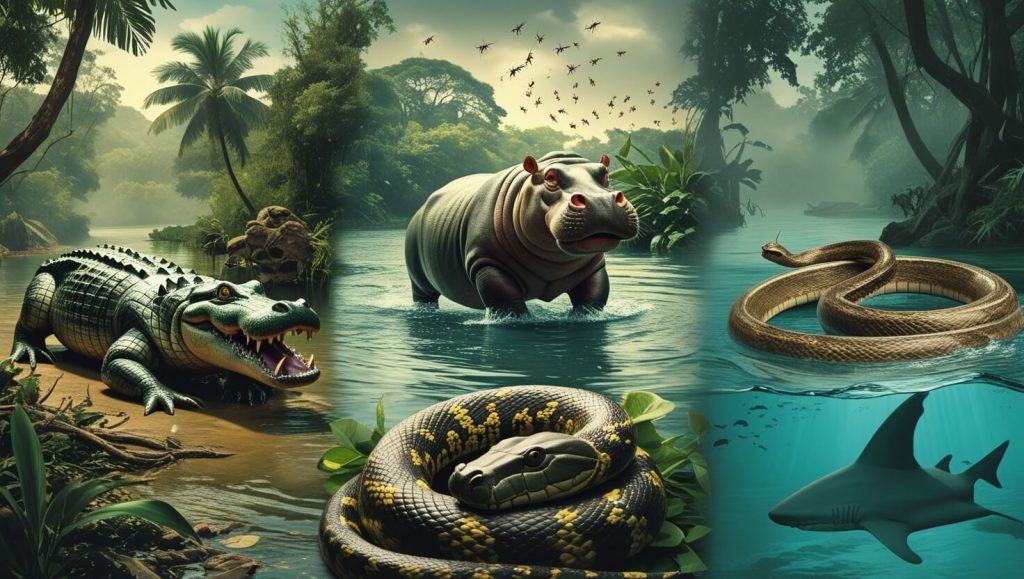
Why Are Some Animals Dangerous to Humans?
Animals don’t usually attack humans for no reason. Most deadly encounters happen because of:
- Territorial instincts: Animals protect their space or young.
- Hunger: Predators may see humans as prey.
- Self-defense: Animals attack when they feel threatened.
- Disease transmission: Some animals carry deadly diseases.
- Accidental encounters: Humans often stumble into dangerous situations.
Understanding these reasons can help us avoid dangerous animals and stay safe in their habitats.
Top 10 Animals That Kill Humans
Here’s a countdown of the deadliest animals based on their impact on human lives, including direct attacks and disease-related deaths. (Note: Statistics vary by region and year, but these are based on global averages and reliable data.)
10. Sharks: The Ocean’s Misunderstood Predator
Estimated human fatalities per year: 10
The great white shark, the bull shark, and the tiger shark are often the stars of our deepest fears. The idea of a shark attack is terrifying. However, the statistical reality is that you are incredibly unlikely to be killed by a shark.
Why are they dangerous?
Sharks are apex predators with incredible power, rows of sharp teeth, and lightning speed. A single bite can cause catastrophic tissue loss and fatal blood loss. Their hunting instincts can be triggered by splashing, shiny jewelry, or the silhouette of a surfer on a board, which they might mistake for a seal.
Where are they found?
Shark attacks are most common in coastal waters around the world, particularly in the USA (especially Florida and Hawaii), Australia, and South Africa.
How to stay safe:
- Swim in groups and close to shore.
- Avoid swimming at dusk, dawn, or at night when sharks are most active.
- Avoid wearing shiny jewelry or brightly colored clothing in the water.
- Heed all beach warnings and flags.
9. Wolves: The Wild Canine
Estimated human fatalities per year: 10
Wolves have been feared throughout history, featured in countless fairy tales and folklore. While they are powerful predators, healthy wild wolves are very wary of humans and attacks are rare.
Why are they dangerous?
Wolf packs can hunt large prey like elk and moose, meaning they have the strength and coordination to take down a human. Most fatal attacks are not by healthy wolves hunting for food, but are often linked to rabies, habituation to humans (often from people feeding them), or territorial defense.
Where are they found?
North America, Europe, Asia, and the Middle East.
How to stay safe:
- Never approach or feed a wolf.
- If you encounter one, stand your ground, make yourself look larger, and back away slowly. Do not run.
- Keep camp sites clean and store food securely to avoid attracting them.
8. Elephants: The Gentle Giants with a Fierce Side
Estimated human fatalities per year: 500
Elephants are highly intelligent, emotional, and social animals. They are often described as gentle giants. However, they are also the largest land animals on Earth, weighing several tons. When they feel threatened, their size and power make them incredibly dangerous.
Why are they dangerous?
Most deadly elephant encounters happen when humans encroach on their territory. Elephants can be extremely protective of their calves and their herd. They may also become aggressive if they feel cornered, are surprised, or are suffering from the psychological trauma of poaching and habitat loss. They can charge at surprising speeds, trample victims, and use their tusks with deadly force.
Where are they found?
Sub-Saharan Africa and parts of Asia (India, Sri Lanka, Southeast Asia).
How to stay safe:
- Always maintain a very safe distance from wild elephants.
- Never get between a mother and her calf.
- If you are in a vehicle, ensure you have a clear path to drive away.
- Respect wildlife boundaries and protected areas.
7. Hippopotamuses: The River Horse of Doom
Estimated human fatalities per year: 500
The hippopotamus is perhaps the most unexpectedly dangerous animal in Africa. Despite their cute, lumbering appearance, they are extremely aggressive and territorial. They are responsible for more human deaths in Africa than any other large animal.
Why are they dangerous?
Hippos are territorial and will aggressively defend their stretch of river or lake. They have enormous jaws with giant, sharp incisors that can snap a canoe in half with ease. They can run incredibly fast on land—up to 19 mph (30 km/h)—despite their bulky size. Many attacks occur when boats accidentally get between a hippo and its deep-water refuge or when people wander too close to a hippo on land.
Where are they found?
Rivers and lakes throughout sub-Saharan Africa.
How to stay safe:
- Always stay out of rivers and lakes known to have hippos.
- Keep a safe distance from hippos on land; do not assume they are slow.
- Only navigate hippo-inhabited waters in large, motorized boats and with experienced guides.
6. Crocodiles (and Alligators): The Ancient Predators
Estimated human fatalities per year: 1,000
Crocodiles and alligators are ancient reptiles that are perfect ambush predators. They have been virtually unchanged for millions of years because their design is so effective. The saltwater crocodile and the Nile crocodile are the two species most associated with fatal attacks.
Why are they dangerous?
They are masters of camouflage, lying motionless at the water’s edge until prey comes within striking distance. They then explode out of the water with immense power, drag their victim into the water to drown it, and perform a “death roll” to tear off pieces of flesh. Their bite is one of the most powerful in the animal kingdom.
Where are they found?
- Saltwater Crocodile: Southeast Asia, Australia, and parts of India.
- Nile Crocodile: Sub-Saharan Africa.
- Alligators: Southeastern United States and China (less deadly, but still dangerous).
How to stay safe:
- Never swim in waters known to be inhabited by large crocodilians.
- Keep a safe distance from the water’s edge in known crocodile territory.
- Heed all warning signs.
- Do not approach or feed any crocodile or alligator, no matter its size.
5. Tsetse Flies: The Tiny Carrier of Death
Estimated human fatalities per year: 10,000
This is where our list takes a sharp turn. The tsetse fly itself is not deadly; it’s a tiny, biting insect. Its danger lies in the parasite it carries: Trypanosoma, which causes the deadly sleeping sickness (African Trypanosomiasis).
Why are they dangerous?
A bite from an infected tsetse fly transmits the parasite into the human bloodstream. Without diagnosis and treatment, the infection attacks the central nervous system, causing neurological and meningoencephalitic symptoms, leading to coma and death.
Where are they found?
Rural areas of sub-Saharan Africa.
How to stay safe:
- Use insect repellent and wear thick, neutral-colored clothing (tsetse flies are attracted to bright and dark colors).
- Use mosquito nets when sleeping.
- Avoid bushes during the hottest part of the day when the flies are most active.
- Be aware of the symptoms and seek immediate medical attention if you get bitten and feel ill.
4. Dogs: Humanity’s Best Friend?
Estimated human fatalities per year: 25,000
This is a heartbreaking and shocking entry. Dogs are beloved companions to millions. However, in many parts of the world, dogs can be a significant source of danger, primarily through the transmission of rabies.
Why are they dangerous?
The vast majority of fatal dog attacks are not from family pets but from stray and feral dog populations. The primary cause of death is rabies infection from a bite. Rabies is a viral disease that is almost 100% fatal once symptoms appear. Beyond rabies, large packs of dogs can inflict fatal injuries through mauling.
Where are they found?
Globally, but the highest rates of rabies-related deaths are in Asia and Africa.
How to stay safe:
- Vaccinate your pets against rabies.
- Never approach an unknown dog, especially one that is acting strangely.
- Teach children how to behave safely around dogs.
- If bitten, wash the wound thoroughly with soap and water for 15 minutes and seek immediate medical attention for potential rabies treatment.
3. Snakes: The Venomous Threat
Estimated human fatalities per year: 50,000 – 100,000
Snakes are one of the most common fears, and for good reason. Venomous snakebites are a massive public health crisis, particularly in poor, rural communities with limited access to healthcare and antivenom.
Why are they dangerous?
Snakes like the black mamba, saw-scaled viper, Russell’s viper, and various cobras possess potent neurotoxic or hemotoxic venom. A neurotoxin attacks the nervous system, paralyzing the victim and stopping their breathing. A hemotoxin destroys tissue and disrupts blood clotting, leading to internal bleeding and organ failure. Many bites are “defensive,” occurring when a person accidentally steps on or disturbs a snake.
Where are they found?
Tropical and subtropical regions worldwide, with the highest concentration of deaths in South Asia, Southeast Asia, and sub-Saharan Africa.
How to stay safe:
- Wear sturdy, closed-toe shoes and long pants when walking in areas where snakes may live.
- Be vigilant where you step and place your hands, especially in tall grass or woodpiles.
- If you see a snake, back away slowly and give it a wide berth.
- In the event of a bite, keep the victim calm, immobilize the limb, and get them to a hospital immediately. Do NOT cut the wound or try to suck out the venom.
2. Humans: The Danger to Ourselves
Estimated human fatalities per year: 400,000 – 500,000
This is the most tragic and sobering entry on the list. Sadly, humans are the second biggest killer of other humans. This includes homicide, violence, and war.
Why are we dangerous?
Unlike every other animal on this list, human-on-human violence is often driven by complex factors like ideology, greed, revenge, mental illness, and access to weapons. We have the unique capacity for premeditated and large-scale violence against our own species.
Where are they found?
Globally, though rates vary drastically by region, socioeconomic factors, and political stability.
How to stay safe:
This is a deeply complex societal issue. Promoting peace education, conflict resolution, economic opportunity, and mental health support are the long-term keys to reducing this number.
1. Mosquitoes: The Deadliest Animal on Earth
Estimated human fatalities per year: 750,000+
And the number one animal that kills humans is… the mosquito. This tiny, buzzing insect is, by a huge margin, the most dangerous animal on the planet. Like the tsetse fly, the mosquito itself is not the killer; it’s the diseases it transmits.
Why are they dangerous?
Mosquitoes are vectors for numerous deadly pathogens, including:
- Malaria: Caused by a parasite, it’s a leading killer of children in Africa.
- Dengue Fever: A painful and sometimes fatal flu-like illness.
- Yellow Fever: A viral hemorrhagic disease.
- Zika Virus: Can cause birth defects.
- West Nile Virus: Can cause neurological disease.
- Chikungunya: Causes severe joint pain.
A single bite from an infected mosquito is enough to transmit these diseases.
Where are they found?
Every continent except Antarctica. The highest burden of disease is in tropical and subtropical areas.
How to stay safe:
- Use EPA-registered insect repellent containing DEET, picaridin, or oil of lemon eucalyptus.
- Wear long-sleeved shirts and long pants.
- Use mosquito nets over beds, especially nets treated with insecticide.
- Eliminate standing water around your home (in flower pots, buckets, tires) where mosquitoes breed.
- Support public health initiatives for disease prevention and mosquito control.
How to Stay Safe Around Dangerous Animals
While these animals are dangerous, most attacks can be prevented with caution:
- Learn About Local Wildlife: Know which animals live in the area you’re visiting.
- Avoid Provoking Animals: Don’t approach or disturb wild animals.
- Travel in Groups: Many predators avoid attacking groups of people.
- Use Protective Gear: Wear appropriate clothing and carry repellents or sprays.
- Seek Medical Help: For bites or injuries, get help immediately to prevent complications.
By respecting nature and staying aware, you can reduce the risk of dangerous encounters.
Frequently Asked Questions (Q&A)
u003cstrongu003eShould I be more worried about lions or mosquitoes?u003c/strongu003e
You should be u003cemu003emuchu003c/emu003e more concerned about mosquitoes. While lion attacks are dramatic and make headlines, they are extremely rare. The risk from a mosquito-borne disease like malaria is statistically far greater. However, this doesn’t mean you should ignore safety guidelines around wildlife. Always follow the advice of experienced guides. Your main focus should be on mosquito prevention: use repellent, sleep under a net, and take anti-malarial medication if prescribed.
u003cstrongu003eAre shark attacks really that rare?u003c/strongu003e
Yes, they are incredibly rare. You are more likely to be killed by a falling coconut or a lightning strike than by a shark. The media gives shark attacks a lot of attention because they are unusual and frightening events, which creates a perception that they are more common than they truly are.
u003cstrongu003eWhat should I do if I get bitten by a snake?u003c/strongu003e
The most important thing is to get to a hospital as quickly as possible. Keep the bitten person calm and still to slow the spread of venom. Keep the bitten area below the level of the heart. Remove any tight jewelry or clothing near the bite in case of swelling. u003cstrongu003eDO NOTu003c/strongu003e cut the wound, try to suck out the venom, apply a tourniquet, or apply ice. These old-fashioned methods are dangerous and can make the injury much worse.
u003cstrongu003eWhy are hippos so aggressive?u003c/strongu003e
Hippos are not inherently u0022mean,u0022 but they are intensely territorial. They spend their days in the water and are very protective of their stretch of river, which is their safe space from the sun and predators. They perceive anything that comes between them and deep water (like a boat) as a threat and will charge to eliminate that threat. They are also very protective of their young.
u003cstrongu003eCan you die from a dog bite even if it doesn’t have rabies?u003c/strongu003e
Unfortunately, yes. While rabies is the leading cause of death from dog bites globally, a severe mauling by one or multiple dogs can cause fatal injuries from blood loss or organ damage. This is especially a risk for small children. This is why it is crucial to never leave a young child unsupervised with any dog, even a family pet.
u003cstrongu003eIf humans are so dangerous to each other, is the world becoming more or less violent?u003c/strongu003e
This is a complex question, but data from historians and organizations like the UN suggest that, on a per-capita basis, we are living in the most peaceful time in human history. While news cycles make it feel like violence is everywhere, the percentage of the global population that dies from violence and war has decreased significantly over centuries. However, any loss of life is a tragedy, and there is still much work to be done to create a more peaceful world.
Conclusion: Respect, Not Fear
This list reveals an important truth: the most dangerous animals are often not the large predators we see in movies, but the small, often overlooked ones that transmit disease. It also shows that human activity and conflict are a tragically significant source of mortality.
The goal of this article isn’t to make you afraid of the world. It’s to foster a sense of respect and awareness. Understanding the risks posed by these animals allows us to take simple, effective steps to protect ourselves. It allows us to appreciate the raw power of an elephant or a crocodile from a safe distance, and to combat the tiny mosquito with knowledge and prevention.
By understanding the dangers, we can better navigate our world and work towards a future where fatalities from all these animals, especially humans and mosquitoes, are drastically reduced.
judi bola situs toto link slot situs toto link slot link slot monperatoto

Rony Junior is a lifelong animal lover who’s happiest with muddy paws on the couch and fur on their clothes. From curious cats to loyal dogs and everything in between, they write about the joy, challenges, and quirks of living alongside animals. When not blogging, you can find them at the local shelter, giving belly rubs and making new four-legged friends.


